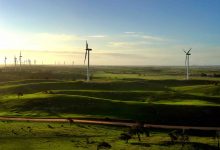Wind and solar generation records were just one part of the fascinating data to come out of the Australian electricity markets in the month of June: Another is the huge jump in negative pricing events.
According to data provided by Rystad Energy, there were nearly 450 hours of negative prices across the National Electricity Market (which covers the grid in the eastern state, South Australia and Tasmania), and the main Western Australian market.
That is a three fold increase over the same month in the previous two years, and reflects a lot of excess capacity that is not being sucked up by storage: It also points to the inflexibility of coal-dominated grids that do cope badly with the influx of variable renewable sources such as wind and solar.
Negative pricing events are often blamed on the growth of wind and solar, but one really interesting aspect highlighted by Rystad Energy’s David Dixon is the fact that – proportionally – coal fired states have the highest number of negative pricing events.
That’s because coal fired generation – like nuclear – is not very flexible. These generators do not like ramping up and down.
That’s why gas and hydro were built decades ago to provide the flexibility to respond to changes in demand. It’s why many loads – such as hot water, but also manufacturing – were switched to night time to make sure the coal generators had some demand, and to avoid repeated falls into negative pricing.
What’s interesting about the latest data is that South Australia leads the way with the number of hours of negative pricing events in June, with more than 150 hours. But that might be expected given it had a share of 71.1 per cent wind and solar, and comparatively little storage.
But Victoria, which had around 37 per cent share of wind and solar in June, also had nearly 150 hours of negative pricing during the month. It hosts three highly polluting and inflexible brown coal generators, which don’t like being turned off and will big negative prices to ensure they are dispatched.
Queensland had around 50 hours of negative pricing events, but only had around 16 per cent wind and solar during the month.
The situation is complicated by the fact that there are also network constraints – limits to the amount of wind and solar that can be physically exported to neighbouring states, and the lack of storage and demand management.
Rystad Energy wrote a report in 2021 warning of “grid-lock” in the Asia-Pacific region, including Australia, in those grids with a lot of coal fired generation and little capacity to export power.
These technologies include batteries, hydro, gas, and diesel. Conversely, dispatchable generation that is inflexible, such as coal and nuclear, cannot typically operate below 40%-60% of installed capacity and is slower to ramp up and down.
“Flexible, dispatchable generation can ramp up and down quickly and is able to operate at a very low percentage of installed capacity,” it notes. These technologies include batteries, hydro, gas, and diesel.
“Conversely, dispatchable generation that is inflexible, such as coal and nuclear, cannot typically operate below 40%-60% of installed capacity and is slower to ramp up and down.”
“Curtailment of solar PV is already a significant issue in key markets such as Australia, Vietnam, India and China,” it noted.
This has an impact on the revenue that wind and solar installations receive, because of the number of negative pricing events caused by the inflexibility of coal. Rystad calls this “capture” pricing, to reflect the share of wholesale prices that can be captured by wind and solar.
 “Higher PV penetration has had a significantly greater impact on received spot prices, particularly in Australia’s coal dominated grids in New South Wales, Queensland and Victoria,” it notes.
“Higher PV penetration has had a significantly greater impact on received spot prices, particularly in Australia’s coal dominated grids in New South Wales, Queensland and Victoria,” it notes.
“Whilst similar degradation of spot revenue can be seen for wind, the impact is not as severe as for PV. Wind has a more favorable generation profile than solar as it is spread over all hours of the day and not just concentrated to daylight hours.
“Wind generation can also align with typical peak demand periods (early mornings and evenings), when PV generation is low.
“Furthermore, the high penetration wind grids evaluated have a significant amount of flexible dispatchable generation such as hydro (for instance in Tasmania and Nordic countries) or gas (Texas and South Australia) to complement the wind output.”









